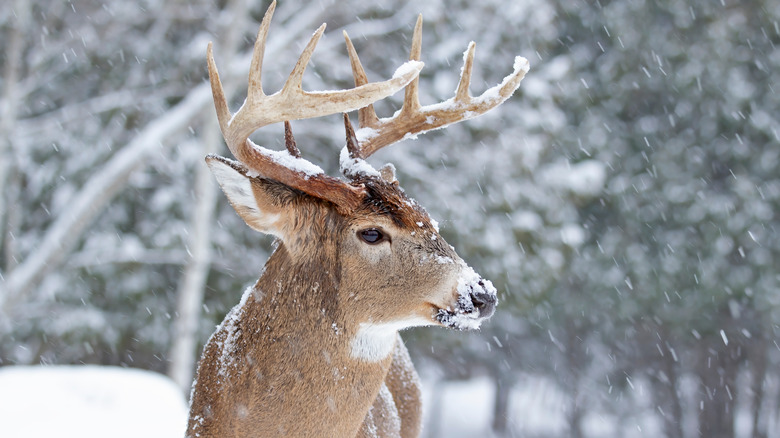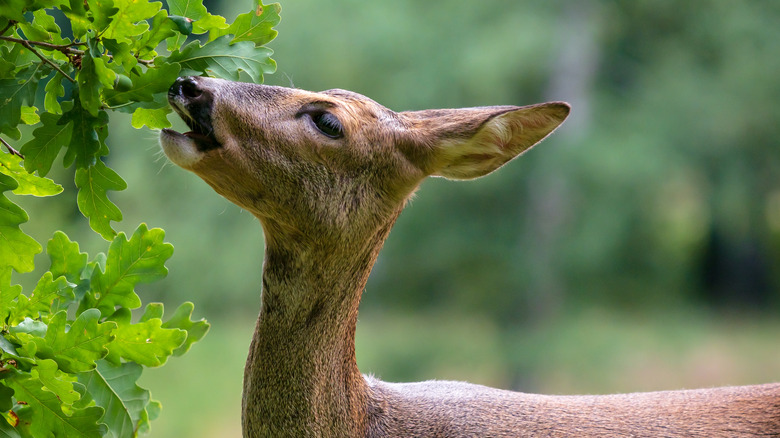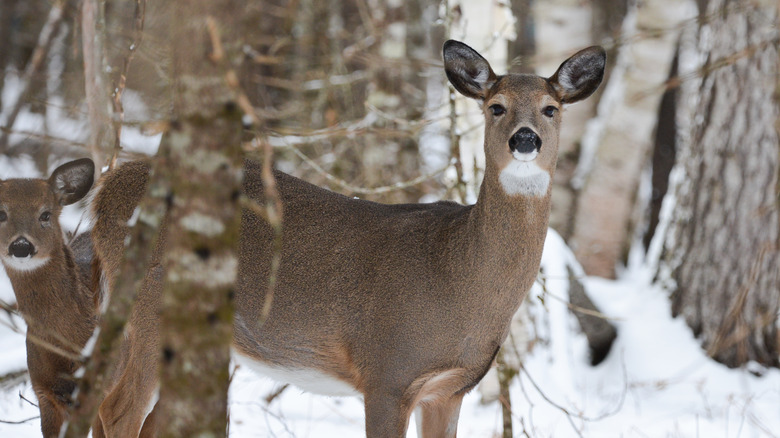Where Do Deer Sleep In The Winter?
When we snuggle up in our beds on a cold winter's night covered with blankets and wearing flannel pjs, deer are out there sleeping in the snow — and they're doing just fine, thank you. They've made several adaptations to survive and thrive in harsh winter weather. They're so adaptable (per National Geographic), the white-tailed deer is the widest-ranging ungulate in the Americas, living as far north as blustery New England and southern Canada and as far south as the South American country of Bolivia, according to TuftsNow.
Turns out, it's not just one adaptation that allows deer to survive in the cold; it's a fully-packed bag of tricks that helps protect them from the elements. From their cold weather coat to oil glands, a winter diet, and certain behaviors, altogether they give deer an edge against old man winter, allowing them to survive in freezing temperatures where other creatures, including humans, wouldn't have a chance.
Perfectly prepped for the elements
Deer are built with long, slender legs that allow their blood vessels to touch each other, according to AniLogics. That's just one of their clever adaptations to keep them warm. The cold blood returning from the legs to the body core is heated by warm blood that's leaving the body core. That saves the deer energy since it won't have to warm up that blood, says AniLogics.
Deer also up their insulation in preparation for winter. In the summer and fall, they start holding on to more fat and storing it around their internal organs and under their skin to provide energy reserves when they need it, according to North American Nature. They also shed their summer coats and grow a winter version with thicker, longer hairs called guard hairs, according to TuftsNow. In addition, the animals grow a thicker undercoat for the winter months, and special oil-producing glands give them a natural raincoat by making their coats water-repellent.
Winter-ready noses?
Another way deer conserve energy for winter is by slowing down, according to the Dickinson County Conservation Board in Iowa. They might not move for days during extremely harsh conditions, according to TuftsNow, and can drop their metabolism by half. They also find places known as "deer yards," which are areas that offer deer protection and as much warmth as possible in cold weather. Deer yards generally consist of a thick covering of trees to provide shelter and trap heat. They offer food that deer like to eat and they're near south-facing slopes to make the most of the sparse sunlight (via The Dickinson County Conservation Board).
Even the deer's nose is adapted to operate optimally in cold conditions. Their noses have smaller vessels that are 25% more dense than the human nose. Those highly vascular noses help protect the brain while heating cold air entering the body, according to North American Nature. All these finely crafted adaptations coalesce to create one hardy creature that's prepped and ready for temps as low as -30 degrees Fahrenheit. The next time you're whining about the cold, think about that.


